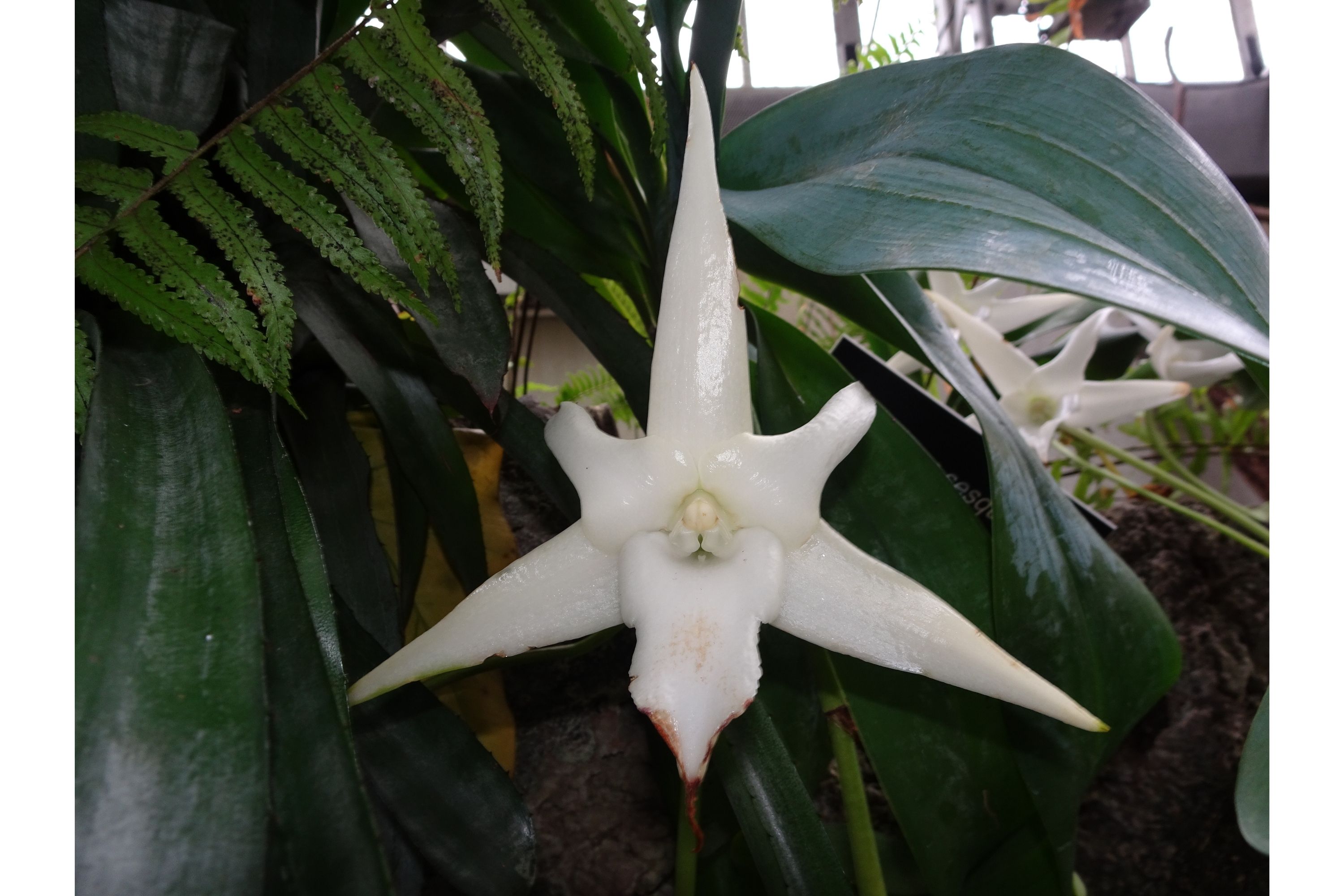Didier's angraecum
(Angraecum didieri)

Description
Angraecum didieri is a species of flowering plant in the Orchidaceae family. The genus Angraecum, abbreviated as Angcm in horticultural trade, common name Angrek (Indonesian and Malay) or comet orchid, contains about 220 species. They are quite varied vegetatively and florally and are adapted to dry tropical woodland habitat and have quite fleshy leaves as a consequence. Most are epiphytes, but a few are lithophytes. The long-lasting flowers are racemose and grow from the leaf axils. They are mostly white, but a few are yellow, green or ochre. They all have a long spur at the back of the labellum (lip). In the case of Angraecum sesquipedale, a species from Madagascar, on observing the 30 centimetres (12 in) spur in the lip, Charles Darwin made the hypothesis that, since the nectar was at the bottom of the spur, a pollinator must exist with a tongue at least that long. Otherwise the orchid could never be pollinated. At the time, he was not believed. However, in 1903, the predicted pollinator was discovered, a hawk moth then named Xanthopan morganii praedicta ("praedicta" meaning "the predicted one"). It has an appropriately long proboscis. The specific name sesquipedale means "one foot and a half", referring to the length of the spur. This is an example of mutual dependence of an orchid and a specific pollinator. Tropical Africa and Madagascar contain the majority of the genus with one outlier found on Sri Lanka, and three species once thought to belong to the genus in Japan and the Philippines. But these orchids can also be found on the Comoros, the Seychelles, and the Mascarenes. They occur between sea level and 2,000 metres (6,600 ft) in humid regions. Like all other orchids it is best to water in the mornings to avoid fungal rot due to overnight dampness. Feeding as per other orchids and similar light conditions: in humid and hot regions (sub tropical) feed fortnightly during growing season (Summer) with a certified orchid fertiliser following directions on packet, weaker solutions are also okay if you're worried. In summer water weekly or more depending on situation. Angraecums flower best when in a lighter position. Keep out of direct sunlight as this can damage (and eventually kill) the plant. Most Angraecums will have their leaves for a number of years so any sun burn spots are ugly for a significant period and also may expose your plant to disease. In indirect sunlight the Angraecums will reward you with blooms and attractive growth.
Taxonomic tree:







